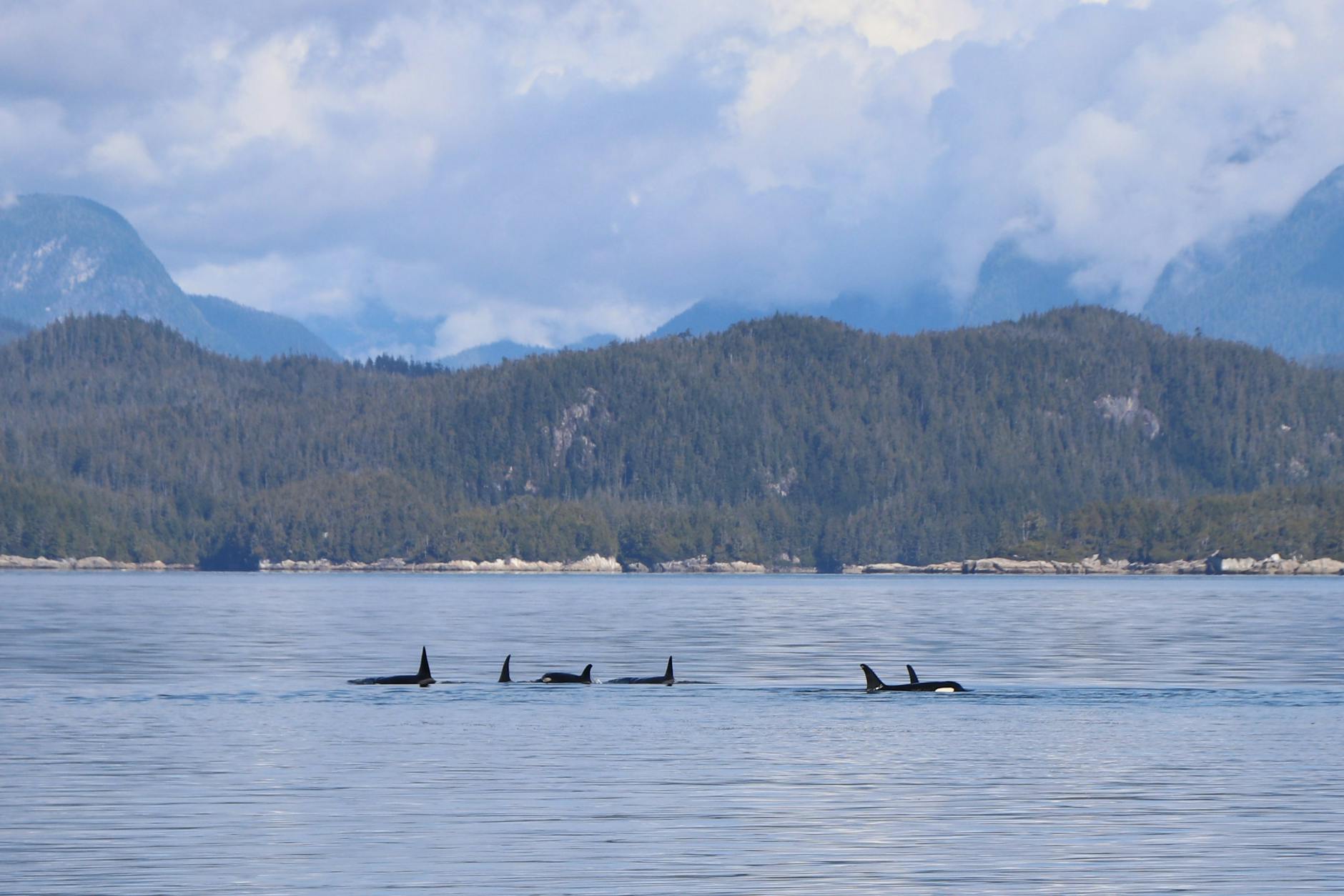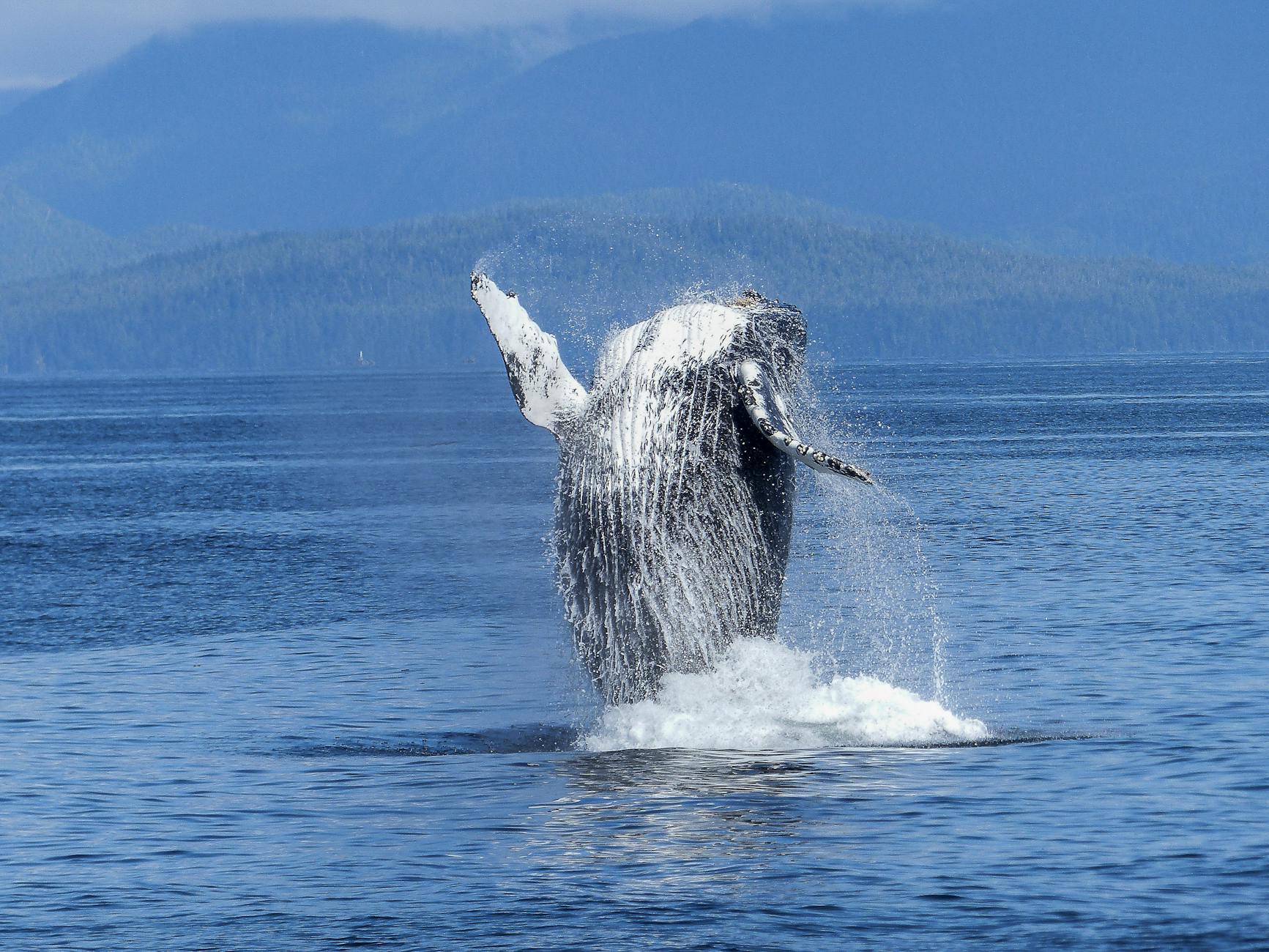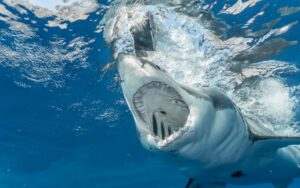The false killer whale (Pseudorca crassidens) is a remarkable yet lesser known marine mammal that shares many characteristics with the more famous killer whale. Despite its name, the false killer whale is not closely related to the orca, though they do share similar social behaviors and hunting tactics.
Found in warmer oceans around the world, these large, sleek dolphins are known for their intelligence, strong social bonds, and distinctive appearance.
In this introduction, we’ll explore key facts about false killer whales, including their impressive size, unique behaviors. Moreover, surprisingly long lifespan that helps them thrive in diverse marine environments.
Genus and Species: Orcinus orca ( False Killer Whale)
• The Latin name Orcinus translates as “belonging to Orcus” (Heyning and Dahlheim, 1999). Orcus was a Roman god of the netherworld and this genus name is likely a reference to the hunting prowess of the killer whale.
• In Latin, orca translates to “large-bellied pot or jar” , but also refers to “a kind of whale”(Heyning and Dahlheim, 1999).
• Despite the widespread distribution and many geographically isolated populations of killer whales. Most scientists consider them all the same species.

However, factors such as morphological and genetic distinctions say that a taxonomic update may be needed
Killer Whale Ecotypes
Scientists currently recognize at least 10 distinct ecotypes (or forms) of killer whales. These ecotypesdiffer at the molecular level and display distinct differences including variations in size, habitat, color pattern, dorsal fin shape, vocalizations, prey type and hunting strategies.
• In the Northern Hemisphere, there are five recognized ecotypes
1. Type 1 and type 2 killer whales inhabit the eastern North Atlantic .
2. In the eastern North Pacific Ocean, observers have recognized that various groups of killer whales show physical and behavioral differences. They categorize pods of eastern North Pacific killer whales into three ecotypes: “transient,” “resident” and “offshore.
3. Researchers analyzed samples collected from 73 whales in the eastern North Pacific and found significant genetic differences among transient whales (also referred to as “Bigg’s killer whales” in honor of early killer whale researcher Michael Biggs) and two separate groups of resident whales.
4. The offshore ecotype has been identified but not as well studied as the resident and transient ecotypes. It appears to be more closely related to the resident ecotype than to the transient ecotype.
5. A fourth potential killer whale ecotype in the Pacific inhabits the Eastern Tropical Pacific (ETP) .
False Killer Whale Ecotypes
There are five recognized ecotypes in the Southern Hemisphere
1. Antarctic type A killer whales .
2. Small type B–this ecotype may also be called “Gerlache killer whales” because they are regularly found around the Gerlache Strait off the western Antarctic Peninsula.
3. Large type B–this ecotype is sometimes referred to as “pack ice killer whales”
4. Type C–also referred to as “Ross Sea killer whales”.
5. Type D–this ecotype may also be called “Subantarctic killer whales”
Killer whales are much more abundant in the Arctic. The Antarctic and areas of cold-water upwelling. Killer whales are found in the open ocean, but they seem to be most abundant in coastal waters.
Rarely, killer whales have been seen in fresh water rivers around the world such as the Rhine, the Thames and the Elbe. One even traveled some 177 km (110 mi.) up the Columbia River apparently in pursuit of fish .
Killer whales are found throughout the world’s ocean. Next to humans, and perhaps the brown rat (Rattus norvegicus), killer whales are the most widely distributed mammal.
Killer whales are most abundant in the Pacific Northwest, along northern Norway’s coast in the Atlantic and in the higher latitudes of the Southern Ocean.
Resident and transient killer whale ecotypes range within the northeastern Pacific from the Aleutian Islands to southern California.
Habitat
Killer whales are much more abundant in the Arctic, the Antarctic and areas of cold-water upwelling. Killer whales are found in the open ocean, but they seem to be most abundant in coastal waters.
• Populations have been documented foraging for long periods of time in shallow coastal and inter-tidal flats in just a few meters of water.
• In addition to being found in colder water, killer whales also have been seen in warm water areas such as Florida, Hawaii, Australia, the Galapagos Islands, the Bahamas and the Gulf of Mexico.
Such sightings are infrequent, but they do demonstrate the killer whales’ ability to venture into tropical waters. • Rarely, killer whales have been seen in fresh water rivers around the world such as the Rhine, the Thames and the Elbe. One even traveled some 177 km (110 mi.) up the Columbia River apparently in pursuit of fish.
Diet
Killer whales are active, top-level ocean predators . They have been observed preying on more than 140 species of animals, including 50 different species of marine mammals.
Killer whales are the largest predator of warm-blooded animals alive today . Some killer whales eat marine mammals such as seals, sea lions, baleen whales, other toothed whales, walruses and occasionally sea otters. Killer whales have been reported to eat many other types of animals including leatherback sea turtles, dugongs (Jefferson et al., 1991) polar bears and even a moose.
Some killer whales eat penguins and other seabirds. Each killer whale ecotype specializes in different prey types and hunting strategies. In many parts of the world, killer whales feed mainly on either fish or marine mammals, but not both.
Size
Adult male killer whales are larger than adult females. • Data from Icelandic killer whales state that an averagesize male is about 5.8 to 6.7 m (19-22 ft.) long.
Data from Icelandic killer whales indicate that an averagesize female killer whale is 4.9 to 5.8 m (16-19 ft.) long.
Average length of adult killer whales varies dramatically between the different ecotypes. Male type A killer whales can reach lengths of 9.2 m (30 ft.), making them the largest killer whales.
Maximum Length and Weight Reported in the Wild • The largest recorded male was 9.8 m (32 ft.) in length and weighed 10,000 kg (22,000 lb).
Skin
A killer whale’s skin is smooth. The outer layer continually and rapidly renews itself, and the old skin sloughs off.
Increased skin cell turnover increases swimming efficiency by creating a smooth body surface which reduces drag.
A killer whale’s blubber (hypodermis) lies beneath the dermis. This blubber, measuring from 7.6 to 10 cm (3-4 in.) thick, is a layer of fat reinforced by collagen and elastic fibers.
Coloration
Killer whales are solid black and white, with a gray patch called a “saddle” or a “cape” on the back, just behind the dorsal fin. The large areas of black and white are distinctly separate.
• The entire dorsal (top) surface and pectoral flippers are black except for the gray saddle. • The ventral (bottom) surface, lower jaw and undersides of the tail flukes are mostly white. The undersides of the tail flukes are fringed with black.
• An oval, white “eyespot” is just above and slightly behind each eye. • Killer whales are countershaded: the dorsal (top) surface is darker than the ventral (underneath) surface. When lighting is from above, a countershaded animal appears inconspicuous.
• The distinctive coloration of killer whales is a type of disruptive coloration, a pattern that obscures the outline of an animal by contradicting the animal’s body shape.
In the flickering, filtered sunlight of the sea, other animals may not recognize a killer whale as a potential predator.
• The size and shape of a killer whale’s white areas and gray saddle vary among ecotypes.
• Conspicuous eye and saddle patches may help killer whales in groups coordinate social interactions, hunting and swimming in formation.
• Albinism in killer whales is rare, but has been documented.
Diving Average Dive Depth
• Although not generally deep divers, foraging resident killer whales can dive to at least 100 m (328 ft.) or more.
• Resident killer whales spend the vast majority of the time (>70%) in the upper 20 m (65.6 ft.) of the water column.
• Over 80% of dives recorded were less than 20 m (65.6 ft.) deep; 70% of dives were less than 10 m (33 ft.) deep.
• Overall the whales (transient mammal eating whales) spent 50% of their time 8 m (24 ft.) or shallower and 90% of their time 40 m (130 ft.) or shallower.
Maximum Dive Depth Recorded The deepest dive known for a killer whale, performed under experimental conditions, was 259 m (850 ft.
A group of seven killer whales were fitted with time-depth recorders in 2002 to study natural dive behaviors. One of these whales, a juvenile, twice dove to a depth of more than 228 m (748 ft.

Behavior : Social Grouping
• Resident populations of North Pacific killer whales, particularly around coastal British Columbia, Washington, and Alaska, have been studied since the early 1970s. Based on long-term studies, the basic social unit of resident killer whales in these areas is called a matriline .
• A matriline is a group of killer whales connected by maternal descent, such as a female with her son and/ or daughters. The matriline may also include the offspring of her daughters as well.
• This core group is highly stable with bonds that appear to be extremely strong—individuals are rarely seen apart for more than a few hours. Individuals have not been seen to permanently leave any of these observed resident matrilines.
• Some matrilines may consist of only one generation others may include as many as four generations of related whales .
• A pod is the next level of social structure observed in resident whales of the North Pacific. A pod contains a group of related matrilines that travel together. Likely they share a past, common maternal ancestor.
Pods are less stable and it’s not unusual for a matriline to break away from the pod for an extended period, perhaps for weeks or months at a time .
• A further social level is called a clan. Clans are made up of pods in an area with similar vocal dialects and are thought to be related.
These pods may have developed from one ancestral pod that grew and fragmented over time. Clans inhabit overlapping geographic areas, and pods from different clans are frequently seen traveling together.
Reproductions and Materials Sexual Maturity
• Depending on the geographic area studied, females are estimated to become sexually mature when they reach about 4.6 to 5.4 m (15-18 ft.) in length, which roughly corresponds to ages between 7 to 16 years.
• Age at first estrus for 1st-generation SeaWorld killer whales was calculated as 7.5 ± 0.3 years (median = 7.4, range: 5.7–8.5 years, n = 9). Total body length at 1st estrus was 483.7 ± 10.5 cm (median = 485, range: 435–523 cm).
• Depending on the ecotype, males become sexually mature when they reach body lengths ranging from 5.2 to 6.4 m (17- 21 ft.) in length. Which corresponds to ages between 10 to 17.5 years (an average of about 15 years).
• Based on serum testosterone concentrations in zoological parks, killer whales males reached puberty from 8 to 12 years of age at 16 feet and were sexually mature from 13 years of age and greater than 18 feet in length.
• In males, dorsal fin length is influenced both by sex linked hormone production (most notable testosterone) and genetics. Captive studies demonstrate that a dorsal fin height to length ratio of 1.4 was associated with sexual maturity in wild males. But it has more recently been demonstrated that males can reach this ratio 1 to 2 years prior to reaching sexual maturation.
• Female killer whales exhibit reproductive sensense (menopause). Resident female killer whales in the north Pacific have not been known to reproduce after 46 years of age, and 50% of the females do not reproduce after 38 years of age.
Finally, Killer whales have never been consistently exploited on a largescale basis. They have been hunted on a small scale for their meat, hides, blubber and internal organs, which are processed into fertilizer and used as bait. Native tribes, such as Inuits around eastern Greenland, hunt killer whales for meat and whale skin (called muktak).



Pingback: Walruses Food Habit, Life History And Behavior